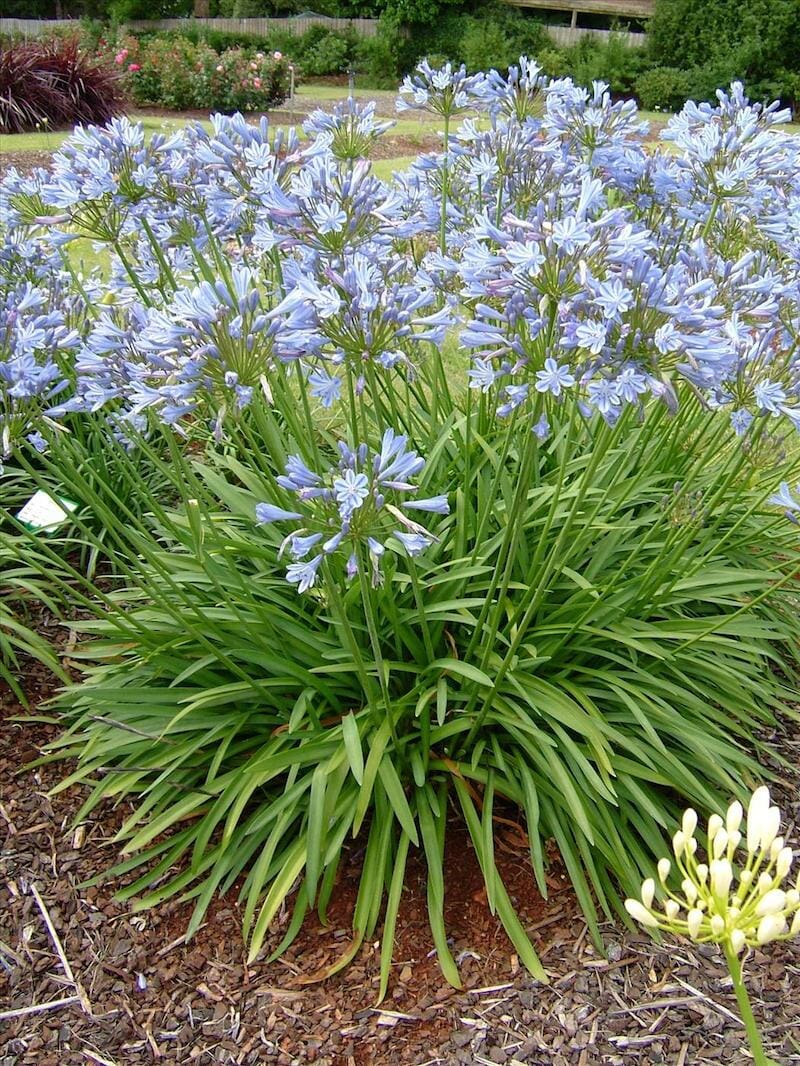Magnificent Agapanthus: Enhancing Your Yard's Elegance
Understanding the Art of Agapanthus Care: Crucial Actions for Healthy And Balanced Growth and Vibrant Blooms
In the realm of cultivation, the farming of agapanthus stands as a gratifying venture for those that seek to support these sophisticated flowering plants. With their striking blooms and elegant vegetation, agapanthus has actually recorded the focus of garden enthusiasts worldwide. However, attaining optimal growth and dynamic blooms calls for a nuanced method that encompasses various essential actions. From choosing the right selection to mastering pruning methods, the trip towards cultivating thriving agapanthus plants is multifaceted and holds the essential to unlocking the full possibility of these organic treasures.

Picking the Right Agapanthus Variety

When picking the appropriate Agapanthus variety for your garden, take into consideration elements such as environment suitability, bloom color, and development routine. Agapanthus, typically known as Lily of the Nile or African lily, comes in a selection of shades varying from tones of blue and purple to white. Choose a flower shade that enhances your existing garden scheme to develop a harmonious landscape. Additionally, take into consideration the environment in your region to make sure the Agapanthus selection you pick can grow in your details conditions. Some varieties are more forgiving of chilly temperature levels, while others prefer warmer climates. Recognizing the growth routine of various Agapanthus ranges is important for correct placement within your garden. Some selections have a clumping growth behavior, perfect for boundaries or containers, while others have an even more spreading nature, ideal for ground cover or mass growings. By very carefully assessing these factors, you can select the ideal Agapanthus selection to boost the appeal of your garden.
Suitable Growing Conditions
Considering the optimum ecological needs is crucial for effective Agapanthus farming. Agapanthus plants are delicate to cold temperatures and must be safeguarded from frost throughout wintertime months.
To make sure healthy development and vibrant flowers, plant Agapanthus bulbs at a deepness of regarding 2-4 inches and space them 8-12 inches apart. Mulching around the base of the plants helps retain moisture and reduces weed growth.
Watering and Fertilizing Tips
Keeping appropriate wetness levels and offering vital nutrients are crucial components in the care routine for Agapanthus plants. When it comes to watering Agapanthus, it is essential to strike an equilibrium. These plants like continually damp dirt but are susceptible to root rot if overwatered.
Feeding Agapanthus is necessary for promoting healthy and balanced development and respected flowers. Use a balanced fertilizer, such as a 10-10-10 formula, in the very early spring as brand-new development arises. Repeat this application every 6-8 weeks throughout the expanding season. Stay clear of extreme Continue fertilizing, as it can cause lush vegetation at the expenditure of flowers. Always follow the maker's instructions for proper dilution and application techniques. By complying with these watering and fertilizing ideas, you can guarantee your Agapanthus plants grow and generate dynamic, resilient flowers.
Pruning Methods for Agapanthus
Pruning Agapanthus plants at the suitable times and with correct strategies is essential for preserving their health and promoting image source optimum growth and blooming. The suitable time to trim Agapanthus is in late wintertime or early spring before new growth arises.
Deadheading invested flowers can also reroute the plant's energy into producing even more blossoms rather than establishing seeds. If you want to collect seeds for breeding, leave some flowers to fully grown and dry on the plant.
Keep in mind to utilize tidy, sharp tools to make specific cuts and reduce the danger of presenting illness. Agapanthus. Regular trimming will certainly aid maintain your Agapanthus looking healthy and neat while ensuring a plentiful screen of lovely flowers
Taking Care Of Common Insects and Diseases
After ensuring appropriate pruning strategies for Agapanthus, it is important to deal with common bugs and illness that can impact the health and vigor of these plants. One typical pest that impacts Agapanthus is the Agapanthus gall midget.
Additionally, Agapanthus plants can suffer from root rot if they are planted in badly draining pipes soil. By being attentive and taking timely action versus conditions and parasites, you can aid your Agapanthus plants prosper and produce dynamic blossoms. Agapanthus.

Verdict
In conclusion, grasping the art of agapanthus treatment entails selecting the ideal selection, supplying optimal growing conditions, correct watering and fertilizing, ideal trimming techniques, and resolving typical parasites and diseases. By complying with these necessary steps, you can make certain healthy and balanced growth and dynamic blossoms for your agapanthus plants. Bear in mind to routinely keep track of and keep your plants to promote their general well-being and long life.
To ensure healthy development and vivid blooms, plant Agapanthus bulbs at a deepness of concerning 2-4 inches and area them 8-12 inches apart. By adhering to these watering and feeding ideas, you can ensure your Agapanthus plants flourish and produce lively, durable flowers.
One typical parasite that impacts Agapanthus is the Agapanthus gall midget. In addition, Agapanthus plants can endure from root rot if they are grown in poorly draining pipes soil. By complying with these crucial actions, you can guarantee healthy growth and dynamic blossoms for your important site agapanthus plants.